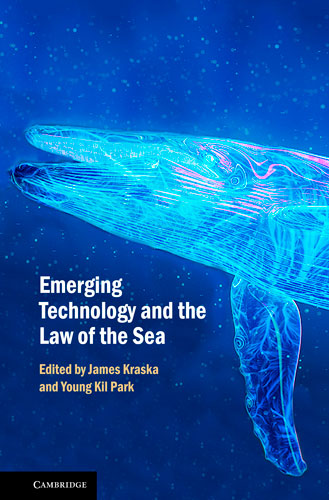Сб с 10 до 16
Emerging Technology and the Law of the Sea/Новые технологии и Морское право
Книга на английском языке.
Autonomous vessels and robotics, artificial Intelligence and cyber security are transforming international shipping and naval operations. Likewise, block chain offers new efficiencies for compliance with international shipping records, while renewable energy from currents and waves and offshore nuclear power stations open opportunities for new sources of power within and from the sea. These and other emerging technologies pose a challenge for the governance framework of the law of the sea, which is adapting to accommodate the accelerating rates of global change. This volume examines how the latest technological advances and marine sciences are reshaping the interpretation and application of the law of the sea. The authors explore the legality of new concepts for military operations on the continental shelf, suggest remote sensing methodologies for delimitation of maritime boundaries, and offer a legal roadmap for ensuring maritime cyber security.
Contents
List of Contributors page
Preface
1 Emerging Technology and Maritime Boundary Dispute Resolution
1.1 Introduction
1.2 Maritime Boundary Delimitation and Changing Technologies
1.3 Conclusion
2 Renewable Energy and the Law of the Sea
2.1 Introduction
2.2 Rights to Exploit Resources
2.3 Rights to Regulate
2.4 Conflict between Sea Uses
2.5 Marine Environmental Protection
2.6 Conclusion
3 Striking an Equitable Balance under the Biodiversity Agreement: The Elusive Case of New Technologies, Marine Genetic Resources and the Global South
3.1 Introduction
3.2 Significant and Substantial Legal Issues
3.3 North–South Capabilities and Disparities
3.4 Unfinished Business and Inherent Biases
3.5 Slow Road to Damascus via the UN
3.6 Questions of Terms and Objectives
3.7 Future-Proofing the Agreement through a Process of Normative Accretion
3.8 Role of Technology in Monitoring and Benefit Sharing
3.9 New Institutional Architecture
3.10 Empowering a One-Stop Information Sharing Platform
3.11 Match-making and Establishing a Technology Mechanism
3.12 Can the Agreement Strike a More Equitable Balance in the Law of the Sea?
4 Small Modular Reactors and Transportable Nuclear Power Plants
4.1 Introduction
4.1.1 Use of SMRs at Sea
4.2 Emerging TNPPs at Sea: Strategic Usage and Description
4.3 The Legal Regime Applicable
4.4 Civil Liability for Nuclear Damage from TNPPs and SMRs
4.5 Conclusion
5 Shipping, Distributed Ledgers and Private Maritime Law
5.1 Sea Cargo Documentation
5.2 The Payment Process
5.3 Cargo Care and Monitoring
5.4 Vessel Monitoring
6 Maritime Cyber Security
6.1 Introduction
6.2 Technology, Systems and the Maritime Environment
6.3 Electronic Interference, Disruptions and Malicious Cyber Activities
6.4 Legal Authorities
6.5 Other Potential Legal Approaches and Industry Guidance
6.6 Conclusion: Partnerships Are the Key
7 International Standards for Hull Inspection and Maintenance of Robotics and Autonomous Systems
7.1 Introduction
7.2 The International Legal Regime
7.3 Perceived Barriers and the Way Forward
7.4 Conclusion
8 Functionalism and Maritime Autonomous Surface Ships
8.1 Introduction
8.2 The Constitutional Nature of UNCLOS
8.3 Elusive Definitions and Autonomous Navigation
8.4 Functional Flexibility in the Requirement for Ship Manning
8.5 The IMO MASS Regulatory Scoping Exercise
8.6 Toward a Goal-Based Standard Setting Approach
8.7 Procedural Obligations and Functional Flexibility
8.8 Functional Flexibility and Standard of Review
8.9 Conclusion
9 Artificial Intelligence to Facilitate Safe Navigation of Ships
9.1 The Sea and AI
9.2 Defining Concepts in AI
9.3 Legal Duties Relating to Hydrography and Safe Navigation
9.4 AI and Disaster Prevention
9.5 Final Thoughts and Conclusion
10 Unmanned and Autonomous Warships and Military Aircraft
10.1 Introduction
10.2 Unmanned Systems Capabilities and Mission Sets
10.3 Unmanned Systems: Characterization and Status
10.4 Navigational Rights and Freedoms
10.4.1 Duties and Obligations
10.5 Conclusion
11 Seabed Technology and Naval Operations on the Continental Shelf
11.1 Legal Regime of the Continental Shelf
11.2 Military Activities on the Continental Shelf
11.3 Conclusion
Index




